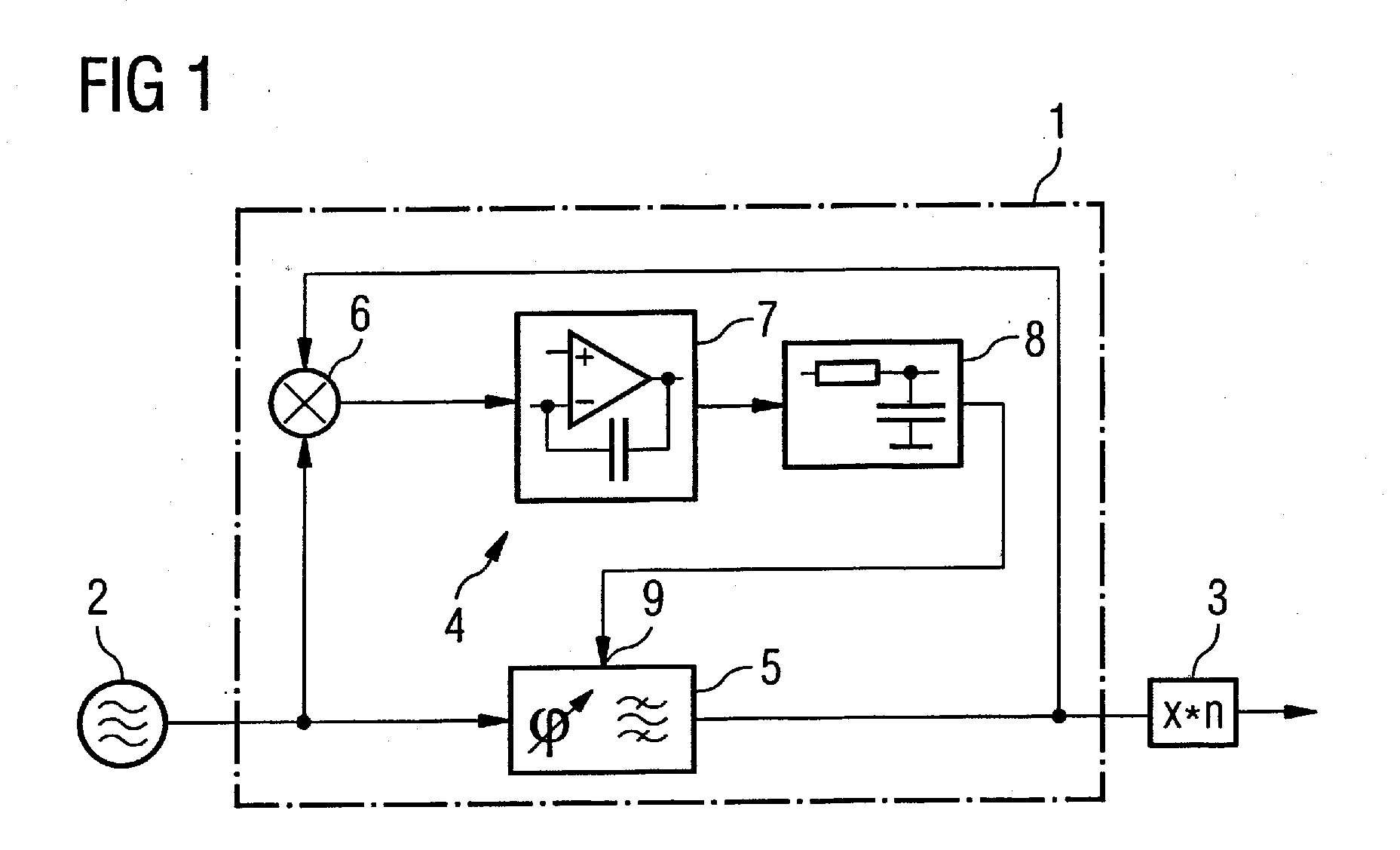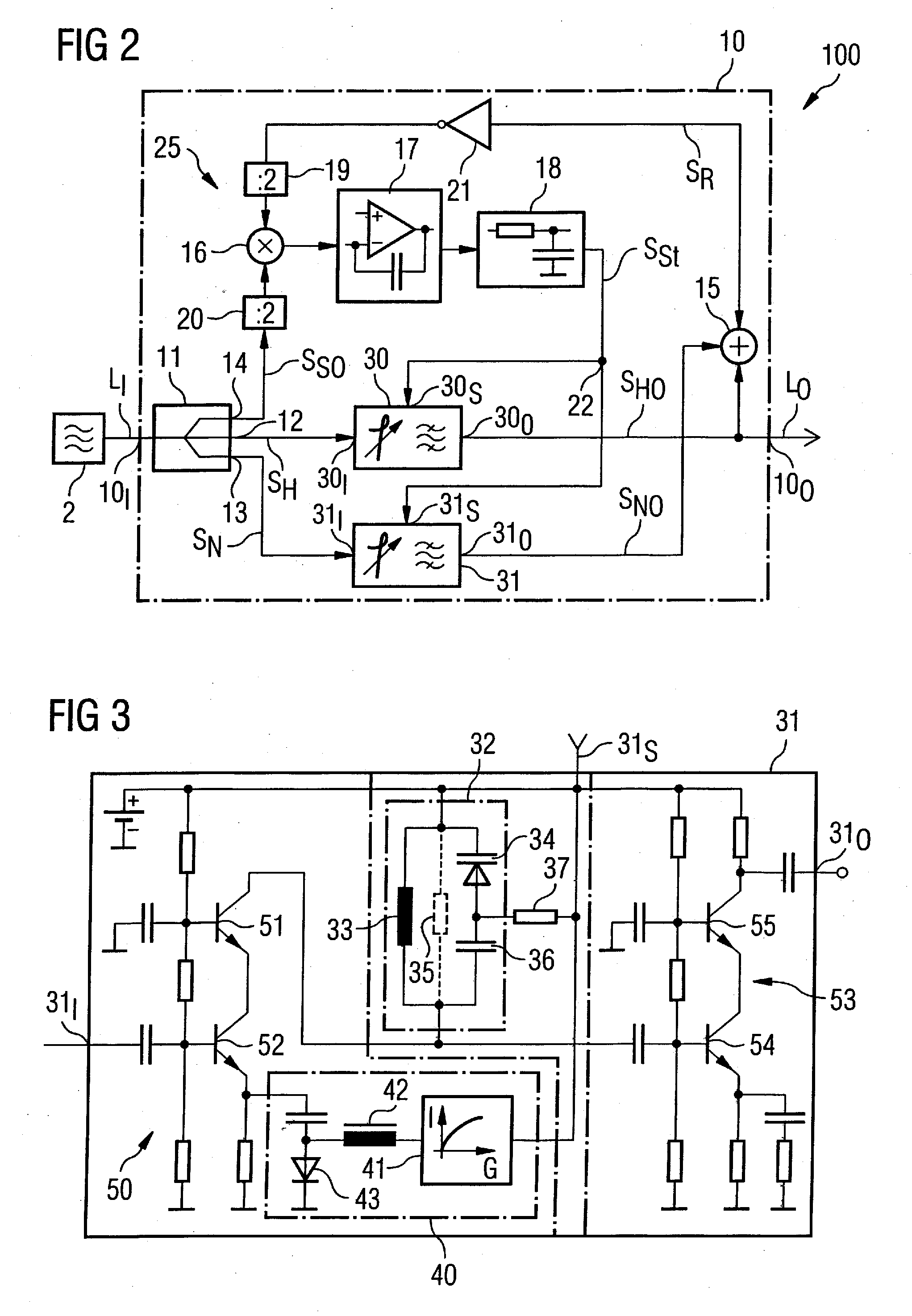Filter circuit arrangement
a filter circuit and filter circuit technology, applied in pulse manipulation, pulse technique, continuous tuning, etc., can solve the problems of limited phase accumulator output resolution, unwanted ancillary emissions, and disruption of appertaining applications, so as to achieve a wide range of capture and not impair transmission behavior
- Summary
- Abstract
- Description
- Claims
- Application Information
AI Technical Summary
Benefits of technology
Problems solved by technology
Method used
Image
Examples
Embodiment Construction
[0037]The basic principle of a circuit arrangement for generation of a local oscillator with an oscillation generator and a downstream filter circuit arrangement with a phase regulation loop was already explained above using FIG. 1. The phase regulation loop has a phase detector that compares a desired signal with a feedback signal and generates a control signal for the tunable filter. For further explanations in this regard, DE 10 2005 024 624 is referenced.
[0038]This principle is expanded by a side branch in the inventive design of such a circuit arrangement 100. This means that a feedback signal is now generated that is also influenced by an output signal of this side branch.
[0039]In the exemplary embodiment shown in FIG. 2 the local oscillator signal LI to be filtered (which is generated by an oscillator 2, here a DDS oscillator 2) is provided at an input 10I of the filter circuit arrangement 10 for this. A decoupled power splitter 11 with three outputs 12, 13, 14 is located on ...
PUM
 Login to View More
Login to View More Abstract
Description
Claims
Application Information
 Login to View More
Login to View More - R&D
- Intellectual Property
- Life Sciences
- Materials
- Tech Scout
- Unparalleled Data Quality
- Higher Quality Content
- 60% Fewer Hallucinations
Browse by: Latest US Patents, China's latest patents, Technical Efficacy Thesaurus, Application Domain, Technology Topic, Popular Technical Reports.
© 2025 PatSnap. All rights reserved.Legal|Privacy policy|Modern Slavery Act Transparency Statement|Sitemap|About US| Contact US: help@patsnap.com



